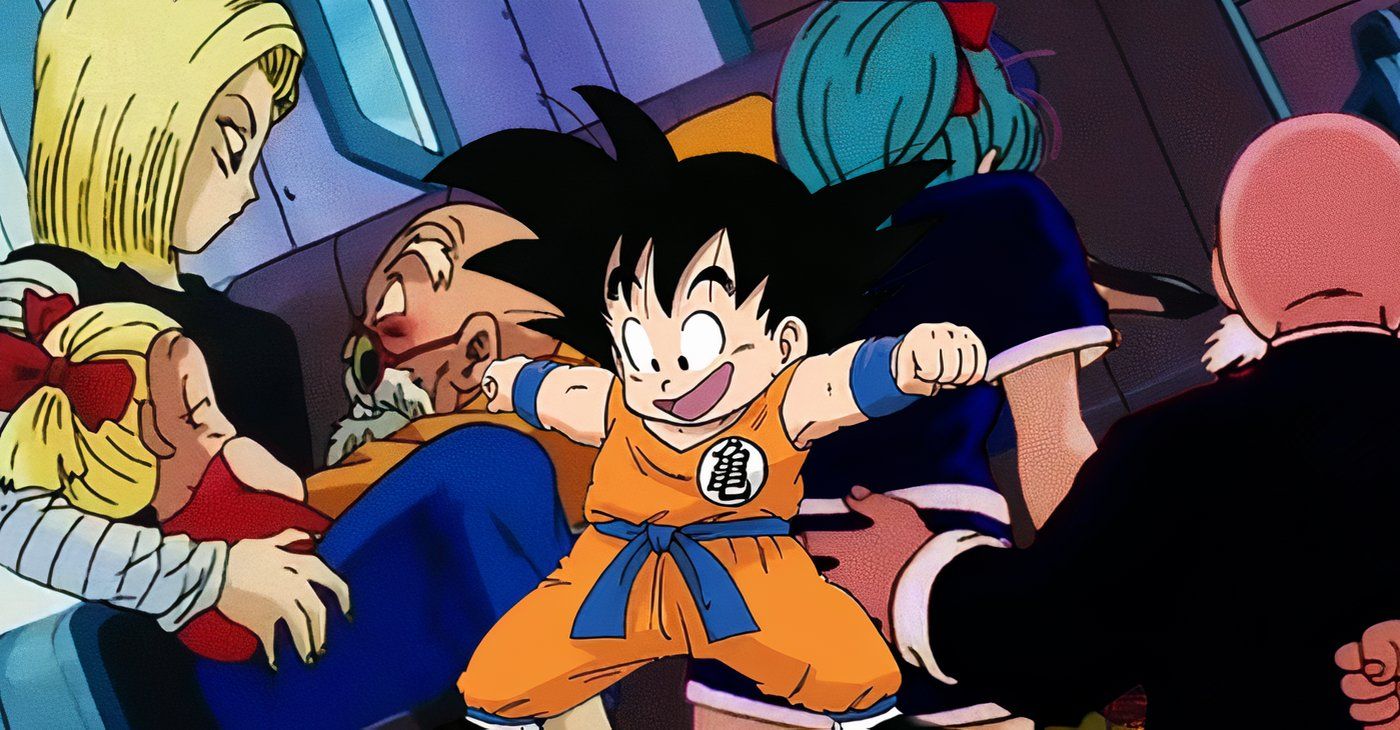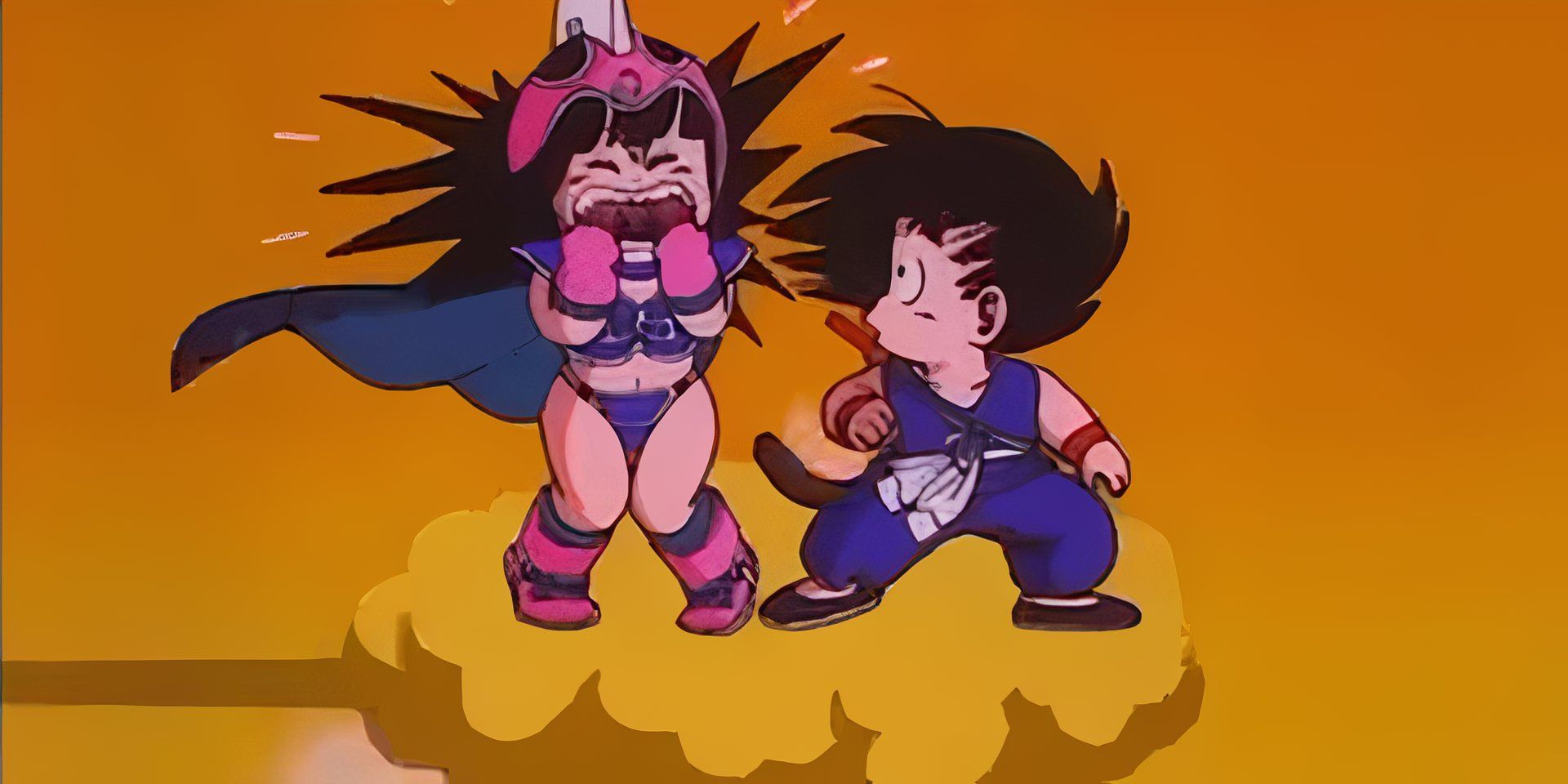
Dragon ball is one of the most popular anime franchises in history, having won millions of fans over the last few decades. However, Not everything in the series' long run has aged as gracefully as its popularity might suggest. There are some scenes, especially in Dragon Ball from the beginning, which perpetuate outdated social norms and stereotypes when viewed from a modern perspective.
Dragon ball was created at a time when certain issues around representation and social consciousness were not as widely discussed as they are now. Because of this, many scenes, including moments, today seem uncomfortable. It is important to recognize these cases not to diminish the legacy of the series, but rather to recognize how far cultural awareness and storytelling have come.
10
Master Roshi's Inappropriate Behavior
Master Roshi is a beloved character, but he tends to go too far
Master Roshi is known in part for his perverted behavior at the expense of the female characters in the series. Roshi's behavior is intended to appear funny, but he crosses several lines and it's uncomfortable to watch. When viewed through a modern lens, their actions normalize harassment in the media and scapegoat it as humor.
What makes his actions more shocking is that Roshi should be a wise mentorproviding guidance to young characters like Goku and Krillin. However, his entire personality is overshadowed by his inappropriate behavior, eclipsing his admirable qualities.
9
Goku patting people to verify their gender
None of the Dragon Ball characters agreed with Goku's actions
In the first days of Dragon ballGoku has acquired the invasive habit of patting other characters to verify their gender. While this should seem like innocent curiosity, it instead becomes one of the strangest aspects of his character. His rural upbringing and lack of understanding of social norms are supposed to be part of his humor, but the joke drags on too long and becomes extremely uncomfortable to watch.
Dragon ball is a product of its time, and modern audiences can understand the importance of recognizing limits and how invasive Goku's actions are. Chi-Chi, Oolong, and Nam express distress when Goku touches them, but their reactions are meant to sound comical. Looking back, this recurring joke is clearly outdatedand disrespect for personal space and consent must be recognized.
8
Toriyama's depiction of POC characters was often done with racist stereotypes
Even if you didn't intend to be harmful, it's important to acknowledge past mistakes
Dragon ball isn't the most diverse when it comes to cast of characters, but when the plot included POC characters, they unfortunately fell short. When discussing black characters in Dragon ballMost people think of Mr. Popo first, and it is often argued that he was not meant to be a normal human being. However, there are other black characters that appear, and they sport exaggerated and stereotypical characteristics that are rooted in racism. The best known and remembered of these characters is Killa, or Officer Black of the Red Ribbon Army.
Revisiting and understanding the choices behind the portrayal of these characters is important for learning and overcoming harmful tropes in order to create characters that are both diverse and genuine.
These representations show how older media still did not have a deeper understanding or respect for the importance of representing other cultures and maintaining diversity. While this in no way means that Toriyama himself was racist, reflects the global lack of inclusion and recognition of harmful stereotypes. Revisiting and understanding the choices behind the portrayal of these characters is important for learning and overcoming harmful tropes in order to create characters that are both diverse and genuine.
7
Representations of gender and sexuality in manga
LGBTQ+ identities were treated without respect at the beginning of Dragon Ball
Continuing with outdated and harmful stereotypes, Dragon ball included moments that have long been archaic about gender and sexuality. A notable example is Bulma and General Blue's interaction. Upon realizing his disinterest in her, Bulma assumes that Blue is gay and tells him that she is actually a man. To this, General Blue responds by calling her “sick” and a “freak of nature”, turning sexual and gender orientation into a joke.
Moments like this show a time when LGBTQ+ identities were often ridiculeddespised and rejected by the mainstream media. While these moments were intended to seem like harmless humor at the time, they now represent a time when all types of media continue to promote prejudice and misinformation. Modern audiences are much more attuned and educated to understand these issues and recognize that depictions like these are harmful and damaging depictions.
6
Android 18's role in the post-Cell saga
Android 18 deserved to have more time to show off his strength and prowess in battle
Android 18 was introduced as a powerful character during the Android and Cell sagas. When she was first introduced she single-handedly destroyed Vegeta in his Super Saiyan form and took down the rest of the Z-Fighters with Android 17. However after her role in the Cell Saga her character was left aside despite being one of the most powerful fighters and instead focused on her domestic life. While there's nothing wrong with wanting a calm and peaceful life, it seems like a missed opportunity to have a female character as part of the main circle of warriors.
Leaving aside Android 18 was also part of a recurring trend in dragon ball, where strong female characters like Chi-Chi and Launch were pushed out of the combat-oriented narrative. Even though she has immense combat skills, 18 Rarely Had Opportunities To Shine In Battle and only returned to fight in the Universe Survival Saga in Dragon Ball Super before being removed again.
5
Old Kai is very similar to Master Roshi
Both Elderly Men Should Not Be Allowed Near Women
Old Kai is supposed to be an ancient and wise god with the ability to unlock Gohan's latent potential, but his behavior quickly reminds fans of Master Roshi. Just like him, Old Kai is inappropriate and has perverted tendencies that are played for laughs. However, it instead undermines his credibility and promotes a damaging narrative that behavior like his is acceptable or remotely normal.
Old Kai could have been a purely mystical figure and could have been as compelling a character without his lack of respect for women. The recurring pattern of inappropriate humor often comes at the expense of female characters in Dragon balland while the trope may have been more accepted when the series began, it now feels outdated and unnecessary.
4
Oolong kidnapping girls and forcing them to marry him
A classic folktale plot that was very outdated even in the 1980s
When Oolong was first introduced, he was labeled as a monster who kidnapped girls and forced them to marry him. Although it is later revealed that all the girls are well and well taken care of, The concept itself hasn't aged well. Instead, the series treated it as a joke, which softened the severity of his behavior and positioned his victims as comedic set pieces rather than people with autonomy.
This little subplot is a perfect example of how Dragon Ball the initial humor walked a fine line between harmless and problematic. Although the series evolves after Oolong's troubling introduction, it remains a reminder of how the series sometimes took its humor too far.
3
Bulma showing off too much to dominate Roshi when she was still underage
This has become one of the most uncomfortable scenes in Dragon Ball
At the beginning dragon ball, there was a very uncomfortable scene where Bulma unknowingly reveals too much to Master Roshi. Firstly, at that time, Bulma was only sixteenmaking the scene even more uncomfortable and pedophile. Secondly, Roshi essentially coerced her into showing him her underwear in exchange for the Dragon Ball he wore around his neck. The scene is intended to play on the humor of Roshi's perversion, but eventually became one of the scenes that aged the worst as modern audiences can understand the ramifications.
Unfortunately, this scene makes Bulma a target for objectification and is just one of many scenes that transform her from a person to little more than an object of desire. Dragon ball was created during a time when these issues were not widely talked about, and Toriyama himself likely did not intend to cause any harm. Even so, it is important to remember that discussing and writing down scenes like this is necessary.
2
Gohan participating in battles as a child
Gohan became a child soldier in Dragon Ball Z and was valued for his potential
Gohan was introduced to the series when he was four years old and was immediately drawn into life and death battles. At the beginning of Dragon Ball Zhe was kidnapped by Raditz and lost his father due to the incident. A year later, he was thrown into combat against Nappa and Vegeta, where he saw his father's friends and his mentor die one by one. Although Goku also faced life-and-death situations at a young age, he was not as young as Gohan, nor was he raised to be a gentle boy like his son.
Gohan is a powerful character, but it's hard to ignore the effects these events had on him as a child.
Gohan was positioned to be exceptionally powerful with the potential to become stronger than Goku, but being exposed to extreme circumstances early in life is alarming. During the Cell Games, despite his young age, he is expected to carry the weight of the world on his shoulders and, again, has to lose his father. Gohan is a powerful character, but it's hard to ignore the effects these events had on him as a child.
1
Bulma is often objectified
Bulma has a lot of depth as a character, but is reduced to an object of desire
Bulma is one of the most intelligent and resourceful characters in Dragon ball and it's still often reduced to their physical appearance throughout the series. She often tries to use her appearance and femininity to get characters to help her or she becomes objectified by other male characters. These moments are framed to be comical and light-hearted, but with a modern lens they instead show a pattern of sexualization of women, even if they have a solid background like Bulma.
When viewed today, it can be seen as portraying women as objects of desire and curiosity rather than people with limits. There are many scenes involving Bulma that have become uncomfortable for modern audiences due to the disrespect for her individuality and the way she was often treated as an accessory. While Dragon ball began as a gag manga, it's still important to note the aspects that haven't aged as gracefully as the rest of the series and understand that, while unintentional, there are harmful stereotypes and depictions.









